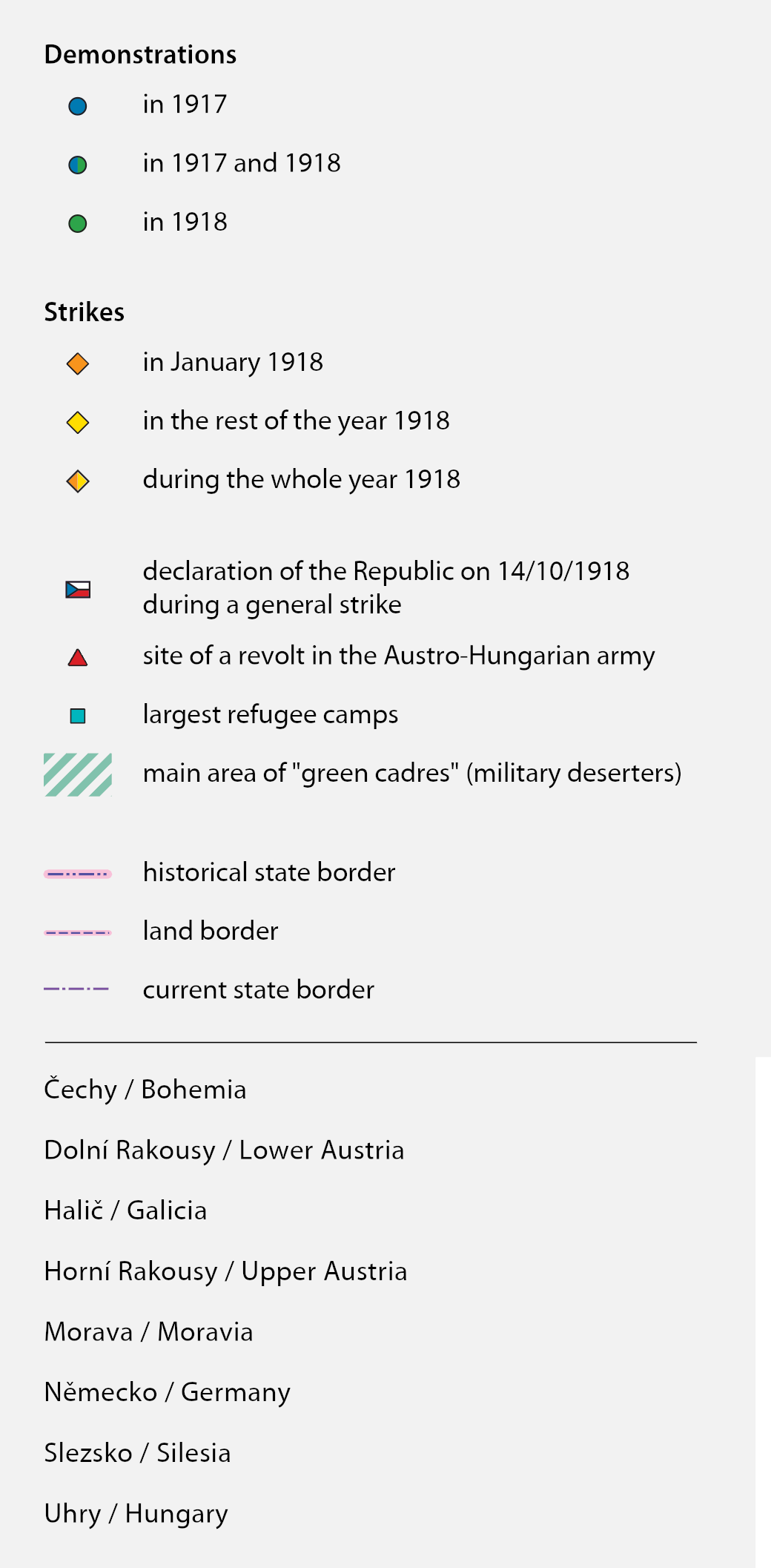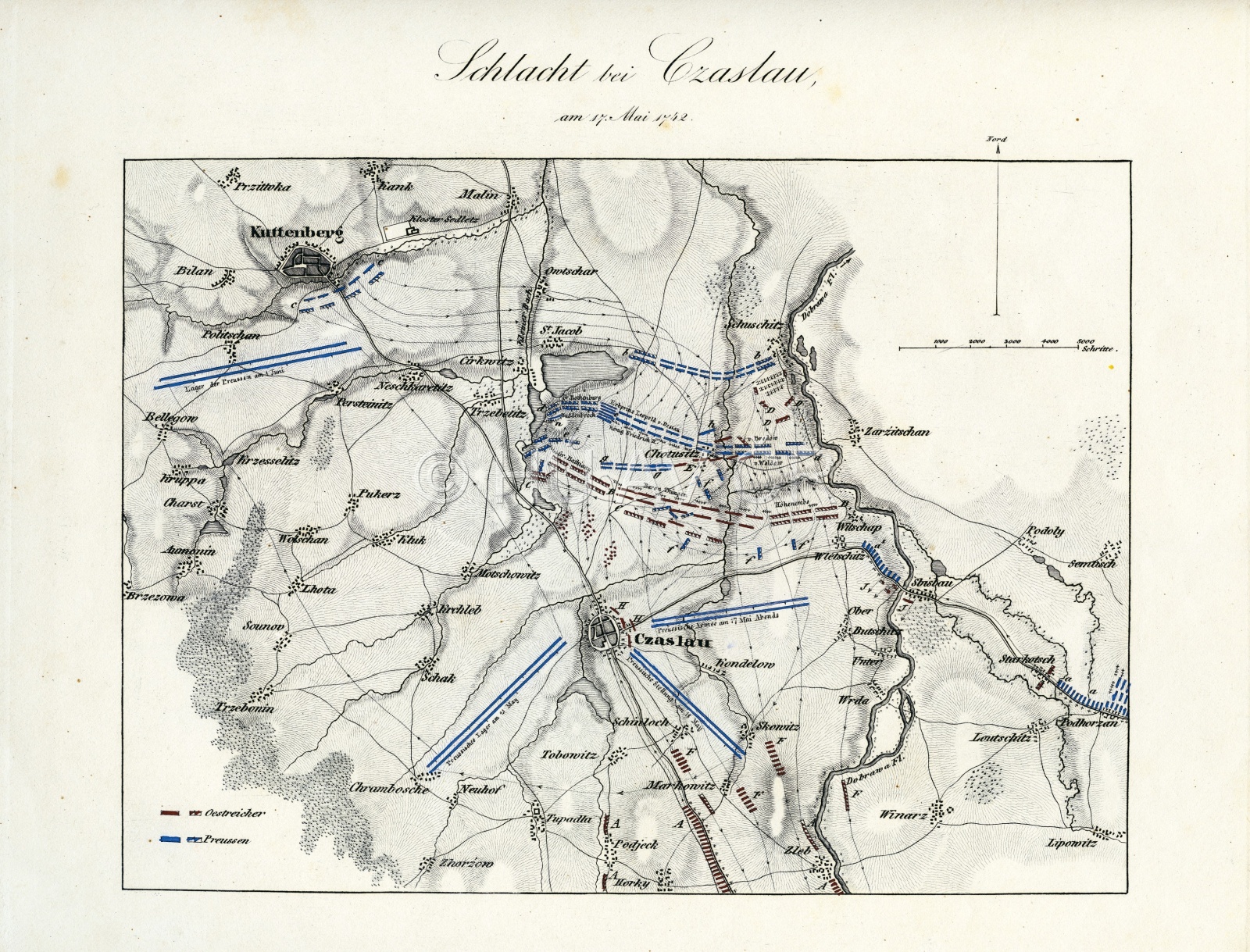Europe and the First World War
The Great War, i.e. the first global conflict of the 20th century between two coalitions of the Entente and the Central Powers took place between 1914 and 1918 mostly in Europe, Africa and Asia. Over 68 million soldiers were mobilised in the armies and fought on several fronts. The progress, outcomes and consequences caused a fundamental historical breakthrough also in the Czech Lands, which became the parts of Czechoslovakia due to the defeat of Austria-Hungary and the political and military activities of Bohemia and Slovakia.
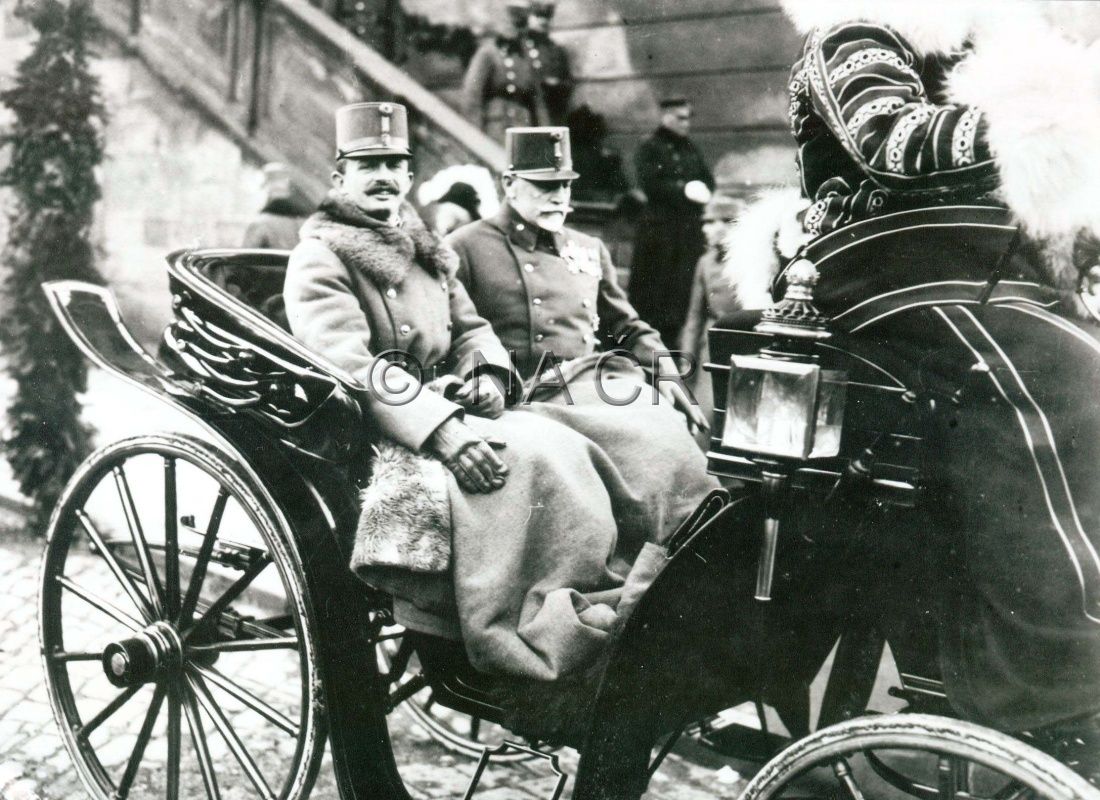
Charles I of Austria (first from the left) – from 21 November 1916 Emperor of Austria, King of Bohemia (as Charles II) and Hungary (as Charles IV), became on 2 December 1916 Chief Commander of the Austro-Hungarian Imperial and Royal Army, a principal member of a coalition of the Central Powers engaged in the First World War – during a visit to Olomouc on 17 December 1917. The National Archives, Prague.
References
Prokš, P.: Habsburkové a Velká válka (1914–1918). Praha 2011;
Semotanová, E. ‒ Cajthaml, J. a kol.: Akademický atlas českých dějin. Praha 2014, 2. akt. vydání 2016;
Kárník, Z.: České země v éře první republiky. Vznik, budování a zlatá léta republiky (1918 - 1929) . Praha 2017.

This work is licensed under a Creative Commons BY-NC-ND 4.0
Corps command of the Imperial and Royal Army in the Czech Lands before the outbreak of the First World War
The Great War, i.e. the first global conflict of the 20th century between two coalitions of the Entente and the Central Powers took place between 1914 and 1918 mostly in Europe, Africa and Asia. Over 68 million soldiers were mobilised in the armies and fought on several fronts. The progress, outcomes and consequences caused a fundamental historical breakthrough also in the Czech Lands, which became the parts of Czechoslovakia due to the defeat of Austria-Hungary and the political and military activities of Bohemia and Slovakia.
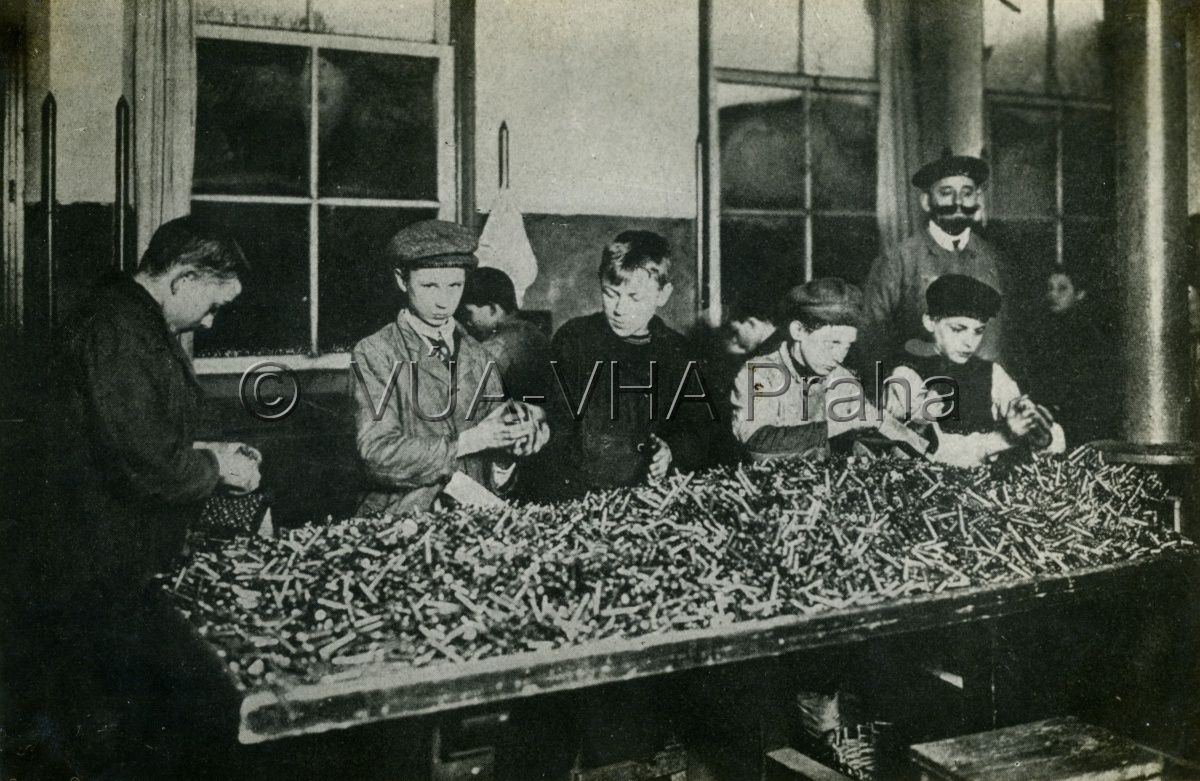
During the First World War, also women and children worked in the manufacture instead of men conscripted into the army. Prague children employed in the production of rifle ammunition. Military Historical Archive Prague.
References
Prokš, P.: Habsburkové a Velká válka (1914–1918). Praha 2011;
Semotanová, E. ‒ Cajthaml, J. a kol.: Akademický atlas českých dějin. Praha 2014, 2. akt. vydání 2016;
Kárník, Z.: České země v éře první republiky. Vznik, budování a zlatá léta republiky (1918 - 1929) . Praha 2017.

This work is licensed under a Creative Commons BY-NC-ND 4.0
Czech Lands during the First World War
The Great War, i.e. the first global conflict of the 20th century between two coalitions of the Entente and the Central Powers took place between 1914 and 1918 mostly in Europe, Africa and Asia. Over 68 million soldiers were mobilised in the armies and fought on several fronts. The progress, outcomes and consequences caused a fundamental historical breakthrough also in the Czech Lands, which became the parts of Czechoslovakia due to the defeat of Austria-Hungary and the political and military activities of Bohemia and Slovakia.
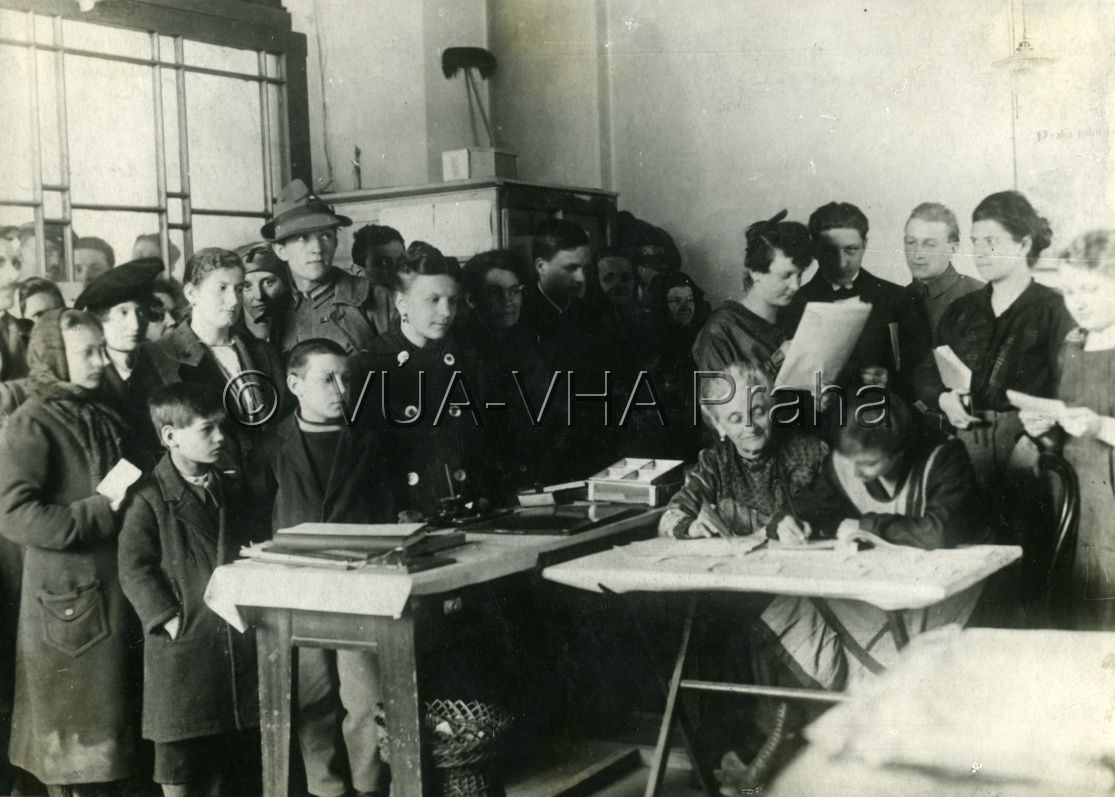
In 1917, the Czech Heart association was established in Prague (and Vienna) as a voluntary social organisation to support starving children, orphans and widows. Anna Podlipná (sitting in the middle) when distributing coupons for goods. Military Historical Archive Prague.
References
Prokš, P.: Habsburkové a Velká válka (1914–1918). Praha 2011;
Semotanová, E. ‒ Cajthaml, J. a kol.: Akademický atlas českých dějin. Praha 2014, 2. akt. vydání 2016;
Kárník, Z.: České země v éře první republiky. Vznik, budování a zlatá léta republiky (1918 - 1929) . Praha 2017.

This work is licensed under a Creative Commons BY-NC-ND 4.0
